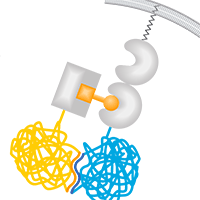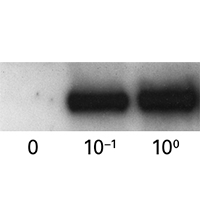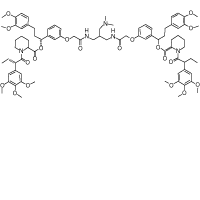iDimerize Inducible Homodimer System

The iDimerize Inducible Homodimer System brings protein-protein interactions under real-time, small-molecule control. A protein of interest is fused to the DmrB binding domain, and dimerization is induced by adding the B/B Homodimerizer (identical to the AP20187 ligand). Plasmid and lentiviral (Lenti-X) vector formats are available.
The iDimerize Inducible Homodimer System brings protein-protein interactions under real-time, small-molecule control. A protein of interest is fused to the DmrB binding domain, and dimerization is induced by adding the B/B Homodimerizer (identical to the AP20187 ligand). Plasmid and lentiviral (Lenti-X) vector formats are available.
NOTE: While it is possible to use the iDimerize Inducible Homodimer System to induce heterodimerization, you will obtain a mixture of homodimers and heterodimers. To induce heterodimers specifically and exclusively, use the iDimerize Inducible Heterodimer System.
iDimerize Inducible Homodimer Systems (with Tet-On 3G technology)
One challenge of ligand-dependent dimerization experiments is that non-ligand-induced dimerization events may occur if the protein of interest is expressed at high levels. This is especially problematic if the target protein is a membrane protein, because the local concentration can increase quickly due to the limited space on the membrane. We've combined iDimerize and Tet-On 3G technologies to eliminate these unwanted events. First, use doxycycline to optimize the protein's expression to physiologically relevant levels. Then induce dimerization by adding the dimerizer ligand to your culture medium.
Overview
- Previously available from ARIAD as the ARGENT Regulated Homodimerization Kit
- Rapid chemical induction of cell signaling pathways
- Activate any pathway or cellular event controlled by homo-oligomers (e.g., dimers, trimers, or tetramers)
- Established tool used by over 2,000 research groups, with over 400 scientific publications to date
- B/B Homodimerizer is identical to the AP20187 ligand
- B/B Washout Ligand reverses protein oligomers that were induced by the B/B Homodimerizer
- Plasmid and lentiviral (Lenti-X) vector formats are available
More Information
Applications
- Induce any event or pathway that is controlled or activated by protein-protein interactions
- Activate signaling pathways in real time
- Study transmembrane receptors
- Recruit signaling proteins to specific subcellular locations (e.g., the plasma membrane)
- Inducible homodimer technology has been used for functional studies of:
- Receptor and non-receptor tyrosine kinases
- Receptor and non-receptor serine/threonine kinases
- Non-kinase receptors
- Signaling proteases
- Adaptor proteins
- Cell adhesion and rolling
- DNA looping
- Activation of recombinase
- RNA splicing
- Protein splicing
- Glycosylation
Product citations
Burnett, S. H. et al. Conditional macrophage ablation in transgenic mice expressing a Fas-based suicide gene. J. Leukoc. Biol. 75, 612–623 (2004).
Freeman, K. W. et al. Inducible prostate intraepithelial neoplasia with reversible hyperplasia in conditional FGFR1-expressing mice. Cancer Res. 63, 8256–63 (2003).
Additional product information
Please see the product's Certificate of Analysis for information about storage conditions, product components, and technical specifications. Please see the Kit Components List to determine kit components. Certificates of Analysis and Kit Components Lists are located under the Documents tab.

Instant control of protein-protein interactions in mammalian cells
Every process in the cell is regulated by a complex network of protein-protein interactions. iDimerize technology allows you to specifically, rapidly, and reversibly control the interaction between two proteins simply by adding or removing a small molecule ligand from the culture medium.
iDimerize learning center Technology overviewTakara Bio USA, Inc.
United States/Canada: +1.800.662.2566 • Asia Pacific: +1.650.919.7300 • Europe: +33.(0)1.3904.6880 • Japan: +81.(0)77.565.6999
FOR RESEARCH USE ONLY. NOT FOR USE IN DIAGNOSTIC PROCEDURES. © 2025 Takara Bio Inc. All Rights Reserved. All trademarks are the property of Takara Bio Inc. or its affiliate(s) in the U.S. and/or other countries or their respective owners. Certain trademarks may not be registered in all jurisdictions. Additional product, intellectual property, and restricted use information is available at takarabio.com.







